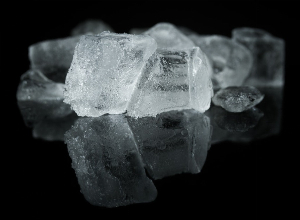Cryotherapy in cancer treatment
Published Feb 4, 2023 • By Claudia Lima
4 February is World Cancer Day. This awareness-raising day is an opportunity to highlight the challenges in the fight against cancer, to inform general population about scientific and medical progress and to raise awareness of the means of prevention and diagnosis and the types of care available.
Each type of cancer requires a specific treatment protocol. Cancer treatments generally include surgery, radiotherapy and/or systemic treatment, i.e. treatment that acts on the whole body by means of a chemical, such as chemotherapy or immunotherapy, for example.
Cryotherapy is also a type of treatment.
But what exactly is it? How does it work? How effective is cryotherapy?
Find all the answers in our article!

Treatment strategy for cancer depends on the type of cancer and the patient's profile. The aims of cancer treatment are:
- to cure the patient or prolong their life,
- to improve the patient's quality of life through supportive care (pain management, nutritional management, psychological and social support, as well as advice on lifestyle).
Cryotherapy is one of cancer treatments. This technique is becoming increasingly important in treating certain tumors, particularly when surgery is not possible.
What is cryotherapy and who can benefit from it?
Cryotherapy is a method of treatment by the cold that has been practiced for centuries. It consists of applying cold to a painful or affected area of the body and generating a vasoconstriction effect that reduces pain and trauma. Today, it is best known for its use in high-performance sport.
There are several techniques, local or general, used in physiotherapy, traumatology, dermatology and aesthetic medicine.
Local treatment can be administered using ice packs, cryogels or cryo-bombs. In dermatology, cryotherapy can be practiced locally with a cotton swab, soaked in liquid nitrogen and placed on the skin. Thermal shock helps to burn the area.
Treating the whole body is possible by means of cold baths, with immersion in cold water, or in a cryotherapy chamber, the WBC (whole-body cryotherapy) where the temperatures can reach below -166°F. In this case, the whole body is exposed to ultra-low temperatures, which helps to:
- Soothe pain and inflammation,
- Improve respiratory function,
- Boost the immune system,
- Accelerate muscle recovery,
- Accelerate healing,
- Tone the skin,
- Reduce stress and sleep disorders.
More people can now benefit from cryotherapy. Apart from professional athletes, people suffering from certain chronic conditions, including numerous joint diseases (osteoarthritis, osteoporosis, fibromyalgia, chronic fatigue, etc.) are also able to enjoy the benefits of this method.
However, there are some contraindications. People suffering with high blood pressure, kidney or bladder diseases, Raynaud's syndrome and patients with a pacemaker should not undergo cryotherapy.
In recent years, cryotherapy has been used in the treatment of certain cancers. It is known as cryosurgery or cryoablation.
How is cryotherapy used in cancer treatment?
Cryotherapy in cancer treatment is defined as a procedure that destroys cancer cells or metastases by means of extreme cold.
This method is used in the treatment of certain cancers such as liver cancer, kidney cancer, prostate cancer and lung cancer. It can replace or complement surgery as an alternative treatment, as it can treat the following types of patients:
- patients who have too many contraindications to surgery and/or anesthesia due to obesity, diabetes or cardiovascular disease,
- patients with isolated metastases, known as oligometastatic patients,
- patients with advanced cancer and so-called intractable cancer pain, where the destruction of part or all of the tumor improves quality of life.
Cryotherapy falls into the category of interventional radiology, which allows for the image-guided destruction of certain tumors. It is a minimally invasive treatment that involves the insertion of needles through the skin and into the area to be treated - the tumor.
The doctor is guided by an ultrasound, CT or MRI scan, and the needles freeze the tumor at -40° to -76°F. These needles are special: at the end of each one, a decompression chamber allows the release of argon, a refrigerated gas, which lowers the temperature to -40°F. A ball of ice is formed at the end of the needles, which encases the tumor and destroys it by the cold. The tumor is left in place, so it is necessary to carry out regular check-ups using medical imagery, to ensure that there are no more viable tumor cells.
Cryotherapy is performed under local or general anesthesia, it is a short and simple procedure that allows the patient to be quickly discharged from hospital.
Cryotherapy is one of the most promising approaches to treatment of certain tumors. Clinical studies are underway to expand the indications for cryotherapy and to include other types of metastases and certain inoperable cancers.
Share your thoughts and questions with the community in the comments below!
Take care!
Sources :
Les cancers, who.int/fr
A quoi servent les soins de support, e-cancer.fr
Pourquoi le cancer, worldcancerday.org
Les différents bienfaits de la cryothérapie, institut-kinesitherapie.paris
La cryothérapie, institutcurie.fr
Cancer : détruire la tumeur et soulager la douleur par le froid, reseau-chu.org

 Facebook
Facebook Twitter
Twitter


